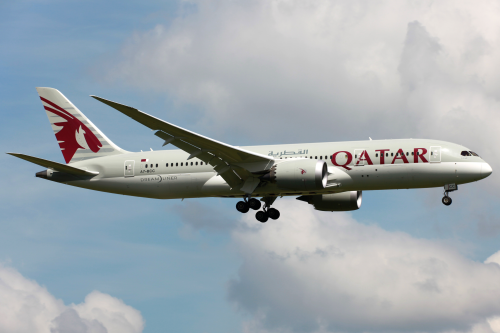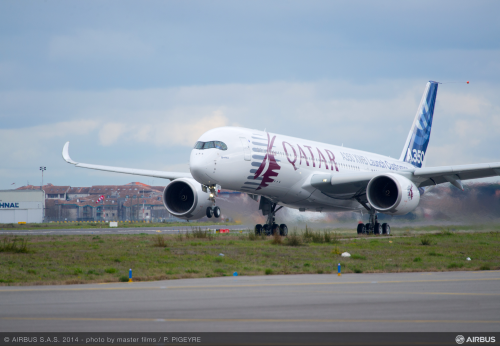

In the first part of George Marsh's article he looks at recent developments at established rivals Boeing and Airbus.
Reinforced plastics have more than taken off in aviation; they are flying high with the latest half plastic civil and military aircraft.
None higher, it seems, than the current standard bearer for the civil composite airframe revolution, the Boeing B787 Dreamliner. With nearly 130 Dreamliners now delivered to 17 airlines, Boeing’s extensively composite airliner is reaching the far corners of the globe. Aviation professionals are watching Dreamliner closely as it is the first major commercial jet to have a composite fuselage as well as the less exceptional composite wings, empennage, control surfaces, nacelles - an almost fully composite airframe in fact. They have witnessed the B787’s difficult birth, afflicted as it was by issues around composites production, devolved supply chain and overheating lithium-ion batteries. With those problems substantially addressed, their main focus now is on how a large passenger-carrying reinforced plastic tube will react in the medium term to the rigours of flight - cycling between extremes of altitude and temperature, cabin pressurisation between zero and nine psi, and repeated landing and take-off stresses - plus non-cyclic hazards such as turbulence and electrical storms. And for many, the elephant in the room is the repair question; how challenging will it be to repair damage, particularly that occasioned by ground vehicles impacting lower fuselage areas? Repairs to metal, which are malleable and where damage is clear to see, have become routine, but this is far from the case with composites. Will the cost of repairs to composite fuselages be sufficiently countered by the lower maintenance requirements these materials normally offer compared with metal?
Boeing has already had to undertake a major fuselage repair. Last July an Ethiopean Airlines B787 caught fire whilst parked, empty, at London’s Heathrow Airport. (That fire was not associated with the lithium-ion batteries involved in earlier incidents that prompted a four-month grounding of all Dreamliners). Caused by an emergency locator beacon, the fire badly damaged a 10ft section of the fuselage crown forward of the vertical stabiliser. Boeing had to create an enclosed workspace around the aircraft at Heathrow and remove the vertical stabiliser and rudder in order to carry out the repair. It has not released details of its method but it seems likely that the repair team excised the damage area and then bonded in a large composite patch pre-manufactured by Boeing. After the two-month procedure, the aircraft was flight tested and returned to passenger service early in January. According to Boeing the aircraft has been returned to full structural integrity, though it remains to be seen how durable the repair proves to be in service. Boeing’s emphasis now will now be on escalating production to 12 aircraft a month, up from the present 10, so that orders for over 1,000 Dreamliners can be satisfied within times that will keep customer airlines on board. This is a severe test for the airframer but also for its supply chain, encompassing everything from carbon composite materials to fuselage sections and other major sub-assemblies. As well as producing the baseline B787-8 model, Boeing expects to deliver the first of the larger B787-9 variant later this year. A further stretch, the B787-10 will follow, commencement of its development having been announced at last year’s Paris Air Show.
Rival
Dreamliner’s arch rival, the Airbus A350XWB (extra wide body), which first flew last June at Toulouse, France, is - like Boeing’s product - about 50% plastic and likewise has a composite fuselage. But Airbus has adopted a different structural concept for the latter. Instead of tape winding barrel sections as Boeing has done, it has opted for composite panels attached to a sub-structure. Repairs can therefore be carried out by removing damaged panels and replacing them. Airbus has more than 800 firm orders from 39 operators covering all three A350 variants, though the smallest apparently has the least appeal. Launch customer Qatar Airways alone has ordered 80. (This airline is also taking B787s.) Both Airbus and Boeing, keen to shine in the pivotal Asian market, exhibited their new widebodies head to head at the February Singapore Air Show. Extensive A350 flight testing is now in progress utilising four prototypes, with a fifth due imminently. First deliveries are due by the end of this year to Qatar Airways. Airbus also continues to deliver its double-deck superjumbo, the A380. The 25% composite content of the world’s largest passenger airliner includes GLARE (glass and aluminium reinforced epoxy) panels in the crown of the capacious fuselage. Such is the fatigue resistance of this fibre metal laminate that the crown panels require minimal scheduled inspection. Other advantages include low weight, high impact resistance, superior fatigue tolerance, and the ability to be treated like a metal in terms of production, repair and maintenance. Emirates expects to introduce a 617-seat layout on its A380s next year, well up from the 555-seat layout initially marketed by Airbus. Meanwhile Boeing, in a bid to maintain the success of its B777 widebody twinjet (notwithstanding the recent mysterious loss of a Malaysian Airlines example), has specified an all-composite wing for this product’s next incarnation, the B777X. This enhancement will bring the composite content of the latest ‘triple seven’ to 12% and provide a competitor to Airbus’ largest A350, the A350-1000. The B777X is attracting wide airline interest, particularly in the Middle East which sees itself as an emerging hub for long-range services that span the globe. The variant, which was launched in November 2013, is set to enter production in 2017 with first delivery due in 2020. In the short to medium haul sector, which includes most low fare carriers, the Airbus/Boeing duopoly has resisted pressure to start developing successors to their ubiquitous A320 and B737 narrowbody families. They know they will have to accede to airline desires in due course, but do not wish to shorten the production runs of the current highly successful aircraft. Therefore, for the interim, they have launched re-engined versions of these, the A320neo and B737Max. New propulsion technology embodied in Pratt and Whitney’s radical geared turbofan, the PW 1000G ‘Pure Power’ series and in the competing CFM Leap B engine, both of which incorporate significant composite elements, should provide sufficient fuel consumption improvement to attract orders. Airframes will be little changed apart from the enlarged nacelles needed to accommodate the larger diameter engines, and associated wing strengthening.
Part 2 of this article looks at developments at some of the challengers to Boeing and Airbus.
This article will be published in the May/June 2014 issue of Reinforced Plastics magazine.
The digital edition of Reinforced Plastics is distributed free of charge to readers who meet our qualifying criteria. You can apply to receive your free copy by completing this short registration form.






